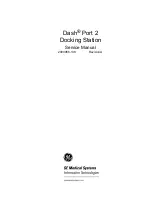
47
Clean solar radiation sensor and solar panel
The solar radiation sensor and solar panel of the outdoor sensor array need
to be cleaned with a non-abrasive slightly damp cloth every 3 months.
Replacing batteries regularly
Batteries of the outdoor sensor array should be replaced every 1-2 years. In
applications where data dropouts cannot be tolerated, check the batteries
every 3 months and apply a corrosion preventing compound (not included)
on the battery terminals for protection.
Prevent snow build up
In snowy environments, use anti-icing silicon spray on the top of the
weather station, and rain collection top, to prevent snow build up.
Rain Gauge Accuracy Cross Check
To tell if the rain gauge is accurate or not, it is not correct to compare to a
rain meter nearby around. Because it is not necessary having a same rain
intensity, even I they are not far from each other. To judge if your rain meter
is correct or not, you may do the following:
1.
Use a narrowed neck bottle that can sit under the rain gauge water
outlet holes. Collect the water during a rain event and measure its
weight. E.g. 353 g.
2.
353 g equals 353 ml, divided by rain collector size of 250 cm2, you get
353/250 = 1.412 cm = 14.1 mm.
3.
Compare the rain readings from your gateway to your local rain event
reading, or a reading from a calibrated manual gauge, to see if they are
matching or not.
4.
Since there may be some water left in the tip bucket, and also some on
the rain collector itself, the observed rain is normally slightly less than
the actual rainfall, but his is normally within 5%. If the deviation is
larger than this, then you can change rain calibration settings
accordingly, or contact the customer service for replacement.
Summary of Contents for GW1003
Page 33: ...33 Dashboard Graph display ...
Page 34: ...34 List display Weather Map ...







































